Top 10 Most Popular Dog Breeds For Indian Homes
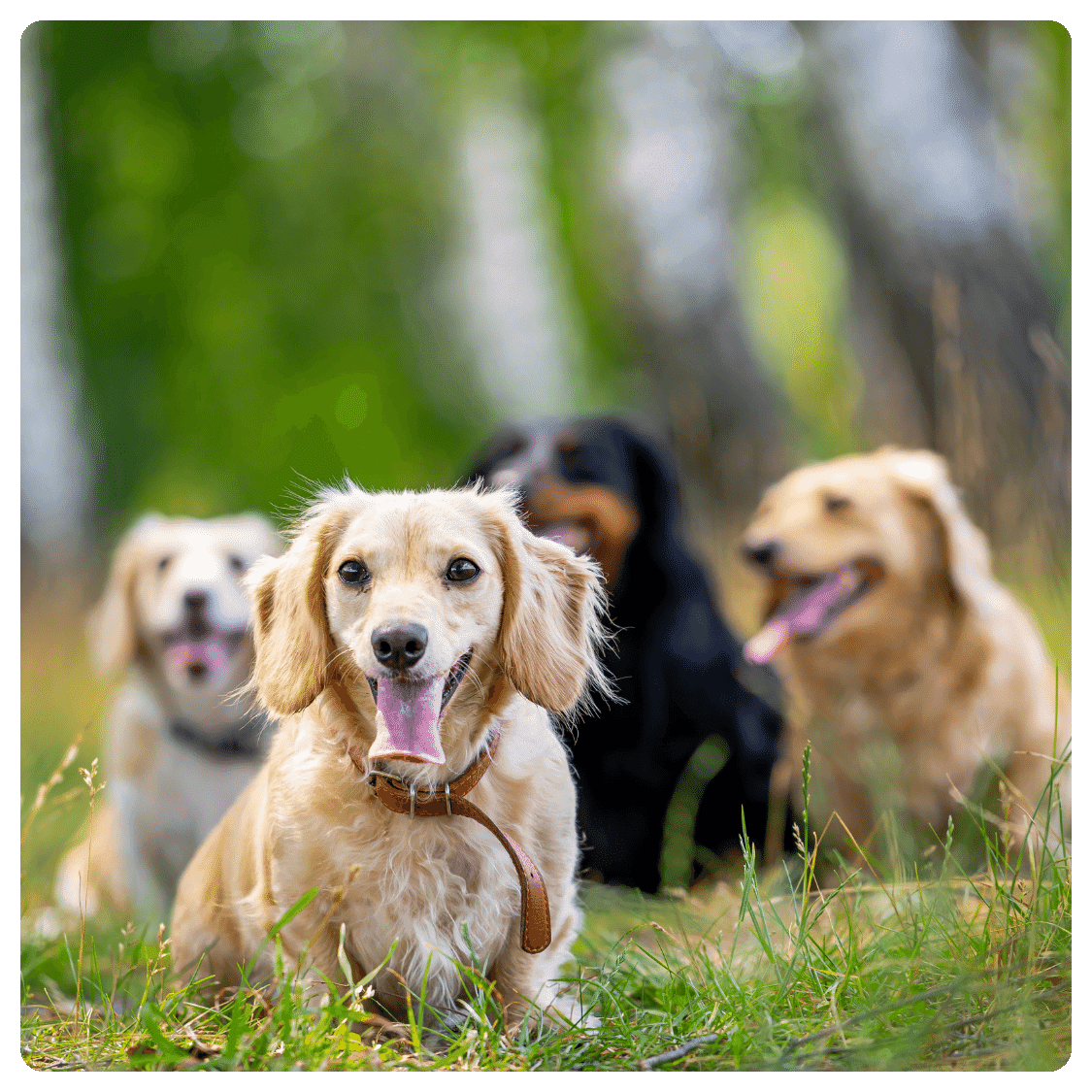
Choosing the best dog breed for a home in India involves considering various factors such as climate, living conditions, lifestyle, and personal preferences. With India’s diverse climate and cultural landscape, selecting a breed that fits well with your family and environment is essential for a happy and healthy relationship between you and your furry companion. This blog will explore popular dog breeds suited for homes in India, detailing their lifespan, dietary needs, exercise requirements, pet grooming needs, health considerations, and suitability for different living spaces, especially for popular breeds like the Indian Pariah Dog. By understanding these factors, readers can make an informed decision when choosing the perfect dog breed to welcome into their Indian home.
Importance of Considering Factors Like Lifespan, Diet, Exercise Needs, And Care Requirements While Choosing The Dog
Considering factors like lifespan, diet, exercise needs, and care requirements is crucial when choosing a dog breed for a home in India for several reasons:
- Lifespan: The lifespan of various dog breeds in India can vary significantly based on genetics and care. Understanding the average lifespan of a breed helps prospective dog owners prepare for the long-term commitment of caring for a pet. It allows them to anticipate the duration of companionship and plan for the dog’s welfare throughout its life stages.
- Diet: Different dog breeds have varying dietary requirements based on factors like size, age, and activity level. Providing proper nutrition ensures the dog’s overall health, vitality, and longevity. In a diverse country like India, where dietary habits can vary regionally, knowing the specific dietary needs of a breed like the Rottweiler helps in sourcing appropriate food and ensuring the dog’s well-being.
- Exercise Needs: Exercise is essential for maintaining a dog’s physical health, and mental well-being, and preventing behavioral issues. Understanding the exercise requirements of a breed enables owners to provide adequate physical activity, whether it’s daily walks, playtime, or engaging in specific activities like agility training or swimming. In India, where outdoor spaces may vary from urban apartments to rural landscapes, matching the exercise needs of large breeds to the available environment is crucial.
- Care Requirements: Each dog breed has unique grooming needs, health considerations, and care requirements. Being aware of these aspects allows owners to provide proper grooming, healthcare, and preventive measures to keep their dogs healthy and comfortable, especially for breeds that require low maintenance. In India, where climate and environmental conditions can vary significantly, understanding a breed’s specific care requirements helps mitigate risks and ensure the dog’s well-being in diverse settings.
Diverse Climates And Living Conditions In India Influence The Choice of a Suitable Breed
In India, the diverse climate and living conditions play a significant role in influencing the choice of a suitable dog breed for a home. Here’s how:
Climate Variability: India experiences a wide range of climates, from the hot and humid conditions of the coastal regions to the cold and dry climates of the northern mountainous regions. This variability in climate affects the type of coat, tolerance to heat or cold, and overall comfort of different dog breeds. For example, breeds with thick double coats may struggle in the hot and humid climate of southern India, while short-haired breeds may be more suitable.
Urban vs. Rural Living: In rural areas, dogs are known for their roles in herding and guarding livestock, making them ideal companions for farmers.: The living conditions can vary greatly between urban and rural areas in India. Urban areas often have limited space, smaller living quarters, and restrictions on pet ownership, which may influence the choice of smaller or low-energy breeds that adapt well to apartment living. In contrast, rural areas may offer more open space and opportunities for dogs to roam freely, making larger, more active breeds thrive in such environments.
Terrain and Environment: India’s diverse terrain includes mountains, plains, deserts, and coastal regions, each with its own set of challenges and opportunities for dog ownership. Breeds that excel in specific activities like herding, hunting, or guarding may be better suited to certain regions based on the terrain and prevalent activities in the area.
Health Considerations: Regular veterinary check-ups are essential for maintaining the health of popular dog breeds in India. Certain regions in India may have unique health risks for dogs, such as tick-borne diseases in forested areas or respiratory issues in highly polluted urban environments. Choosing a breed with resilience to local health risks and providing appropriate preventive healthcare becomes essential in ensuring the dog’s well-being in its Indian home.
Popular Dog Breeds for Homes in India
Choosing the perfect canine companion for your home in India is an exciting yet important decision. With so many wonderful dog breeds to choose from, each with its unique characteristics and temperament, finding the right match for your lifestyle and living conditions is essential for a harmonious relationship.
In this guide, we’ll explore a selection of popular dog breeds that are well-suited to homes in India. From friendly and affectionate companions to loyal guardians and energetic playmates, these breeds offer a diverse range of options to suit various preferences and living environments. Whether you’re looking for a medium-sized family dog, a small apartment-friendly breed, or a loyal working companion like hunting dogs, there’s sure to be a breed that fits your needs.
1) Labrador Retriever
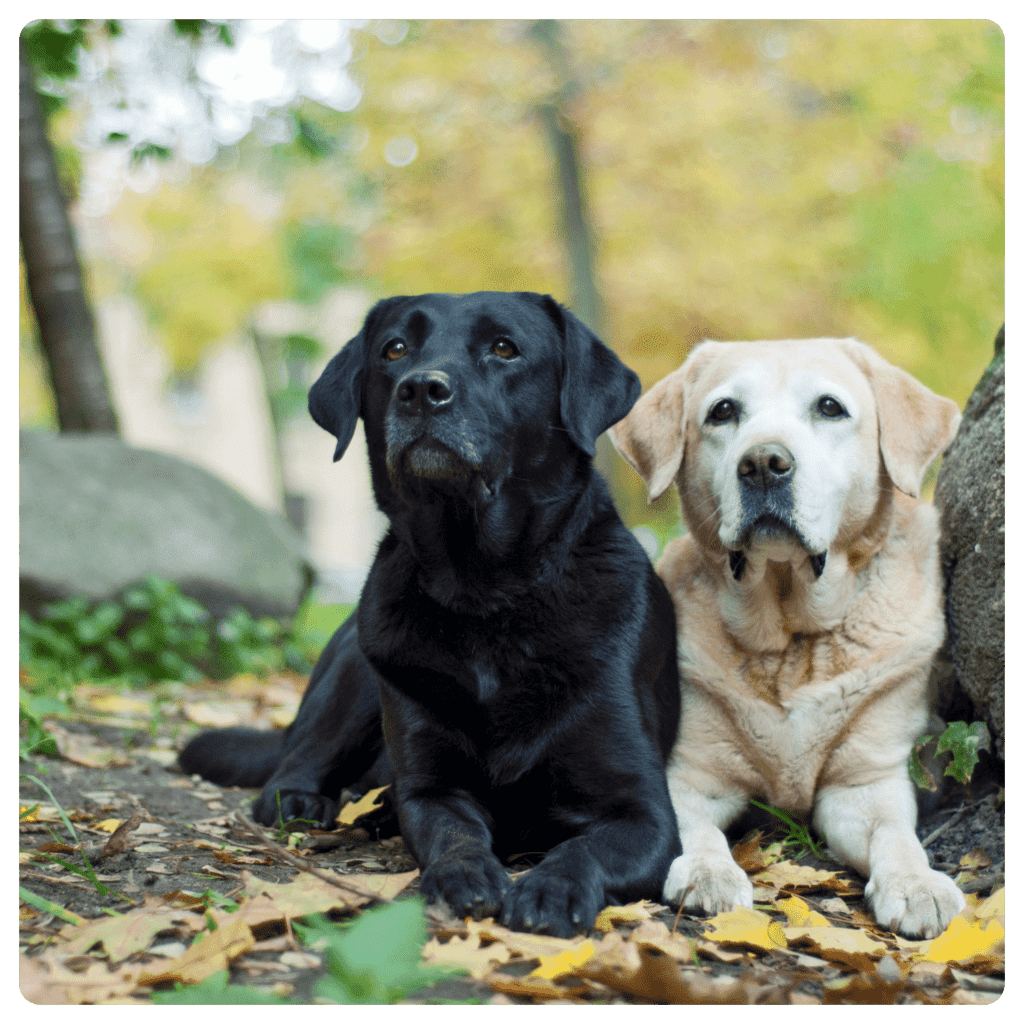
- Characteristics: Breeds like the Indian Pariah are known for their adaptability and resilience. Many dog breeds, including those known for their excellent guard dogs, have unique traits that make them suitable for different households. The Labrador Retriever is a medium to large-sized dog breed known for its friendly demeanor and intelligence. They typically have a sturdy build with a short, dense coat that comes in colors like black, yellow, or chocolate. Labs are well-known for their expressive eyes and wagging tails.
- Temperament: Understanding the temperament of different breeds is key to finding the ideal pet for your family. Understanding the temperament of your dog is crucial in determining if they are the ideal pet for your lifestyle. The temperament of popular dog breeds in India, including those that make excellent guard dogs, can greatly influence their suitability as family pets. Labradors are known to be outgoing, loyal, and eager to please. They have a gentle disposition, making them excellent family pets and great companions for children. Their intelligence and trainability make them versatile working dogs, excelling in roles such as assistance dogs, search and rescue, and therapy work.
- Lifespan: Around 10-12 years.
- Diet and Nutrition are crucial for maintaining the health of small dog breeds, ensuring they receive the right balance of nutrients. Understanding the specific dietary needs of each dog breed in India is crucial for their overall health. Labradors require a balanced diet rich in protein, healthy fats, vitamins, and minerals. High-quality commercial dog food or a vet-approved homemade diet is recommended for all dog breeds in India to ensure their health and well-being. They may tend to overeat, so portion control is important to prevent obesity, especially in breeds known for their affectionate nature.
- Exercise Requirements: Many breeds thrive with regular physical activity and mental stimulation to remain healthy and happy. Large breeds often have higher exercise requirements, making it essential to provide ample activity. Labradors are high-energy dogs and require regular exercise to stay healthy and happy. Daily walks, play sessions, and activities such as fetching or swimming are ideal to keep them mentally and physically stimulated.
- Grooming Needs: Different breeds have varying grooming needs, which is another factor to consider when choosing the right dog. Labradors have a short, dense coat that requires minimal grooming. Weekly dog brushing to remove loose hair and occasional baths are usually sufficient. Regular nail trimming, ear cleaning, and dental care are also important for maintaining your dog’s health, particularly for low shedding breeds.
- Health Considerations: Common health issues in Labradors include hip dysplasia, elbow dysplasia, obesity, and certain genetic conditions like progressive retinal atrophy (PRA). Regular veterinary check-ups, proper nutrition, and maintaining a healthy weight are essential for their well-being.
- Ideal Living Conditions: Some breeds are more suitable for apartment living, while others require more space to thrive. Providing a nurturing environment is crucial for any dog breed, particularly those known for their friendly nature. Labradors thrive in homes with active families who can provide plenty of exercise and mental stimulation. They do well in both urban and rural environments, as long as they have ample opportunities for outdoor activities.
2) Golden Retriever
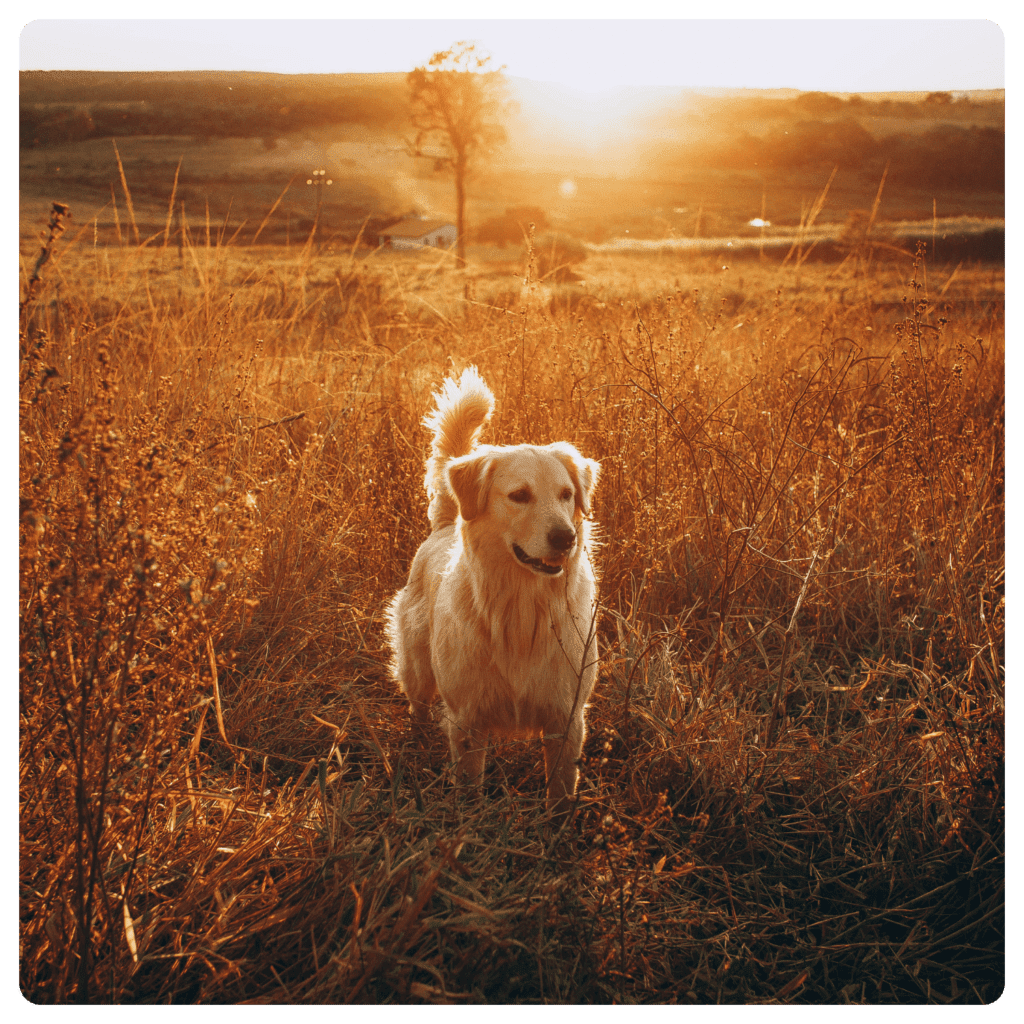
- Characteristics: The Golden Retriever is a medium to large-sized dog breed with a beautiful golden coat that is dense and water-repellent. They have a friendly expression, a well-proportioned build, and a wagging tail that never seems to stop.
- Temperament: Golden Retrievers are known for their friendly, tolerant, and gentle nature. They are highly social and enjoy being part of the family. Their intelligence and willingness to please make them easy to train, and they excel in obedience and agility competitions. Golden Retrievers are also known for their patience and are often used as therapy dogs due to their calm demeanor.
- Lifespan: Typically 10-12 years.
- Diet and Nutrition: Golden Retrievers benefit from a balanced diet that includes high-quality commercial dog food or a vet-approved homemade diet, which is important for any dog breed in India. Portion control is important to prevent obesity, which is common in this breed, especially in larger breeds like the Great Dane.
- Exercise Requirements: Golden Retrievers are active dogs that require regular exercise to maintain their physical and mental well-being. Daily walks, play sessions, and activities like fetching or swimming are recommended, especially for incredibly loving breeds like the boxer dog breed.
- Grooming Needs: Golden Retrievers have a dense, water-repellent coat that requires regular grooming to prevent mats and tangles. Weekly brushing, occasional baths, and regular nail trimming, ear cleaning, and dental care are important for their overall health.
- Health Considerations: Golden Retrievers are prone to certain health issues, including hip dysplasia, elbow dysplasia, and various genetic conditions such as progressive retinal atrophy (PRA) and cancer. Regular veterinary check-ups and screenings can help detect and manage these conditions early.
- Ideal Living Conditions: Golden Retrievers are well-suited to homes with active families who can provide plenty of exercise and companionship. They are adaptable dogs that can thrive in various living environments, as long as they receive adequate attention and stimulation.
3) Indian Pariah Dog

- Characteristics: The Indian Pariah Dog, also known as the Desi Dog or the Indian Native Dog, is a landrace breed indigenous to India. They come in a variety of coat colors and patterns, with a lean, athletic build that reflects their agility and endurance.
- Temperament: Indian Pariah Dogs are highly adaptable, intelligent, and independent. They have a strong prey drive and are excellent watchdogs, making them well-suited for guarding homes and properties. With proper socialization and training, they can be loyal and affectionate companions, forming strong bonds with their families.
- Lifespan: Generally 12-15 years or more.
- Diet and Nutrition: Indian Pariah Dogs are usually hearty eaters and do well on a balanced diet of high-quality commercial dog food or a vet-approved homemade diet. They may also benefit from occasional raw or cooked meat and vegetables.
- Exercise Requirements: Indian Pariah Dogs are active and agile dogs that require regular exercise to keep them mentally and physically stimulated. Daily walks, play sessions, and opportunities for off-leash running are ideal.
- Grooming Needs: Indian Pariah Dogs have a short, low-maintenance coat that requires minimal grooming. Weekly brushing to remove loose hair and occasional baths are usually sufficient for friendly dog breeds like the Cocker Spaniel, which have a medium-length coat. Regular nail trimming, ear cleaning, and dental care are also important.
- Health Considerations: Indian Pariah Dogs are generally healthy and hardy, with few breed-specific health issues, making them among the best choices for families in Indian households. However, they may be susceptible to common canine ailments like ticks, fleas, and gastrointestinal parasites, which can affect even the most beloved pets. Regular veterinary check-ups and preventive care are recommended.
- Ideal Living Conditions: Indian Pariah Dogs are adaptable dogs that can thrive in various living environments, including urban apartments or rural settings. They are highly adaptable and make excellent companions for individuals or families who can provide them with love, care, and regular exercise.
4) Pomeranian Dog
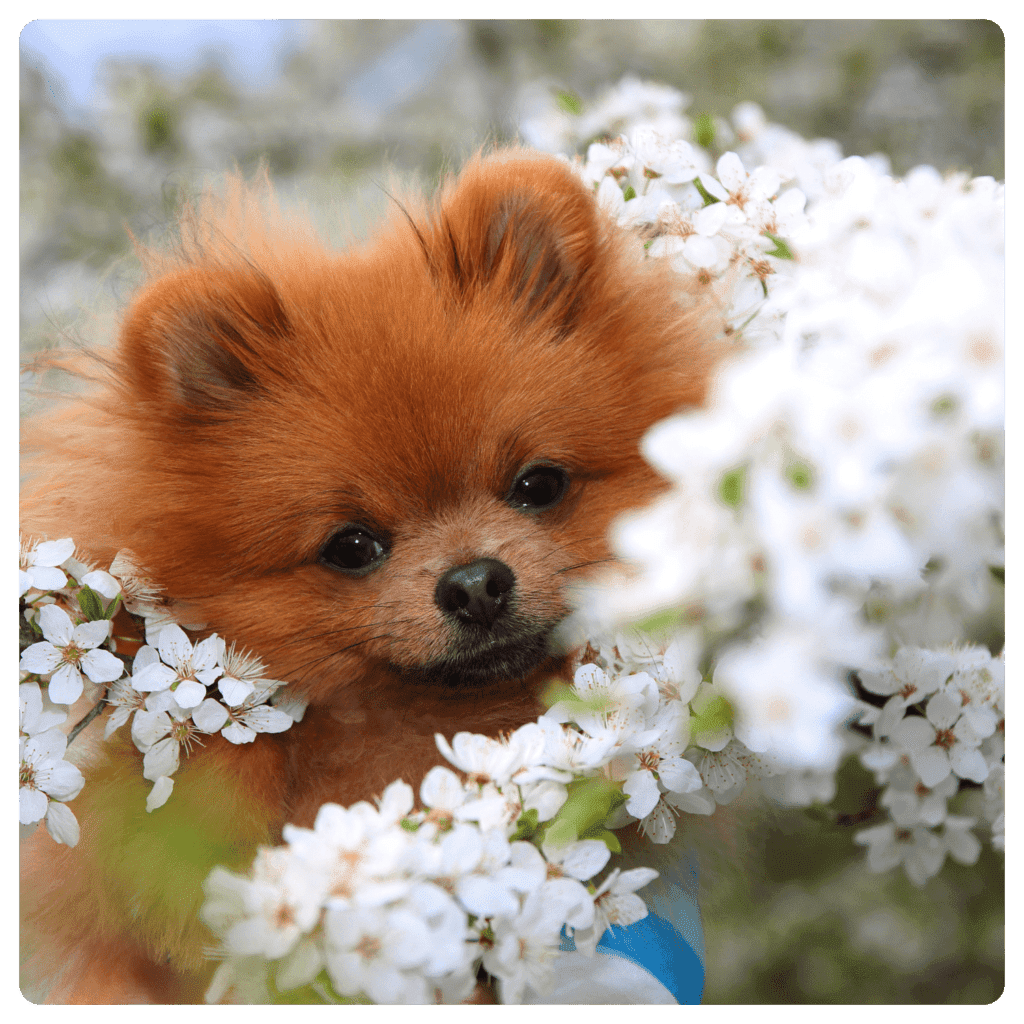
- Characteristics: Pomeranians are small-sized dogs with a fluffy double coat that comes in various colors, including orange, black, white, and cream; these international breeds are a favored choice among companion dogs in India. They have a compact, sturdy build and a fox-like expression with bright, almond-shaped eyes.
- Temperament: Pomeranians are lively, confident, and alert dogs. Despite their small size, they have a bold and outgoing personality, often displaying courage beyond their stature. They are affectionate towards their owners and enjoy being the center of attention, making them delightful companions for families and individuals alike.
- Lifespan: Typically 12-16 years or more.
- Diet and Nutrition: Pomeranians require a balanced diet that provides essential nutrients for their small size and high energy levels, making them an excellent companion dog in India. High-quality commercial dog food or a vet-approved homemade diet is recommended to maintain the health of your dog in India. Portion control is important to prevent obesity.
- Exercise Requirements: Despite their small size, Pomeranians are active dogs that require regular exercise to stay healthy and happy. Daily walks, play sessions, and interactive toys are ideal to keep them mentally and physically stimulated.
- Grooming Needs: Pomeranians have a long, double coat that requires regular grooming to prevent mats and tangles. Daily brushing, occasional baths, and regular nail trimming, ear cleaning, and dental care are important for their overall health.
- Health Considerations: Pomeranians are generally healthy dogs, but they may be prone to certain health issues such as dental problems, luxating patella, tracheal collapse, and skin conditions. Regular veterinary check-ups and preventive care can help detect and manage these conditions early, ensuring that dogs are easy to care for and remain beloved pets.
- Ideal Living Conditions: Pomeranians are well-suited to homes with individuals or families who can provide them with love, attention, and regular exercise. They are adaptable dogs that can thrive in various living environments, including apartments or houses with fenced yards.
5) Beagle

- Characteristics: Beagles are small to medium-sized dogs with a distinctive tri-color coat (black, tan, and white). They have a muscular build, a friendly expression, and a tail that is often held high and wagging enthusiastically.
- Temperament: Beagles are known for their friendly, curious, and sociable nature. They have a playful and energetic disposition, often displaying a zest for life that is infectious to those around them, making them a beloved pet in many households. Beagles are also known for their keen sense of smell and love for tracking scents, which can lead them to follow their nose wherever it may lead.
- Lifespan: Typically 10-15 years, depending on the breed and the care they receive from their owners in India.
- Diet and Nutrition: Beagles require a balanced diet that provides essential nutrients for their energy levels and overall health. High-quality commercial dog food or a vet-approved homemade diet is recommended for large breeds to maintain their health. Portion control is important to prevent obesity, which is common in this breed.
- Exercise Requirements: Beagles are active and energetic dogs that require regular exercise to stay healthy and happy. Daily walks, play sessions, and opportunities for off-leash running are ideal to keep them mentally and physically stimulated, especially for active breeds like the Indian Spitz and other indigenous breeds.
- Grooming Needs: Beagles have a short, low-maintenance coat that requires minimal grooming. Weekly brushing to remove loose hair and occasional baths are usually sufficient to maintain the coat of various dog breeds, including those among the top 20 for family pets. Regular nail trimming, ear cleaning, and dental care are also important.
- Health Considerations: Beagles are generally healthy dogs, but they may be prone to certain health issues such as hip dysplasia, cherry eye, epilepsy, and obesity. Regular veterinary check-ups and preventive care can help detect and manage these conditions early, ensuring your dogs are known for their health and vitality.
- Ideal Living Conditions: Beagles are adaptable dogs that can thrive in various living environments, including apartments or houses with fenced yards. They are social dogs that enjoy the company of their human family members and may not do well if left alone for long periods, making them a best bet for families who are home often.
6) Dachshund
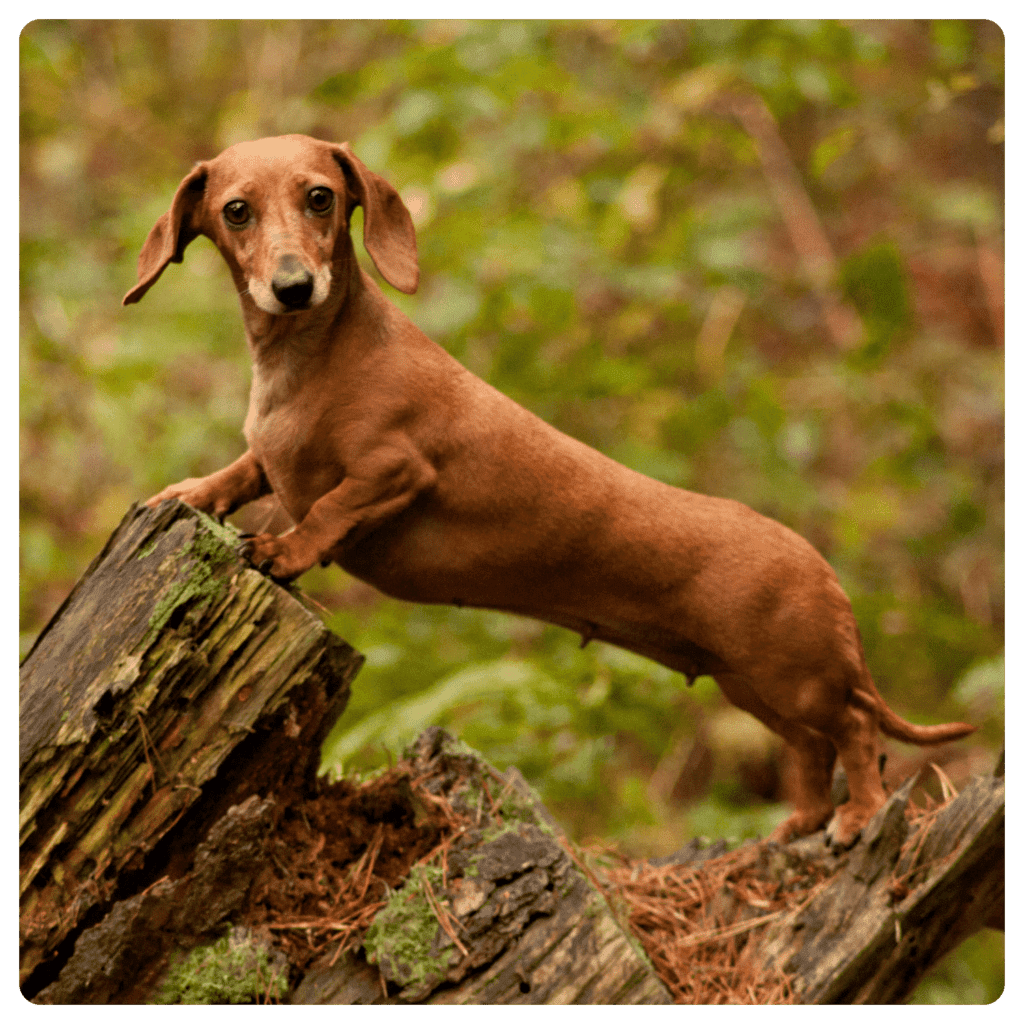
- Characteristics: Dachshunds, also known as Wiener Dogs or Doxies, are small to medium-sized dogs with a long-bodied, short-legged build, and they are known for being trainable, which is a desirable trait in any dog breed in India. They come in three coat varieties: smooth, long-haired, and wire-haired, with colors ranging from red and black to chocolate and tan.
- Temperament: Dachshunds are clever, courageous, and curious dogs with a bold personality that belies their small stature, making them a favorite among those who prefer dogs that are small in size. They are known for their independent nature and can be quite stubborn at times, which can be challenging when choosing the right dog. Despite this, they are loyal and affectionate towards their families, forming strong bonds with their owners, which is a trait common in small dog breeds.
- Lifespan: Typically 12-16 years.
- Diet and Nutrition: Dachshunds require a balanced diet that provides essential nutrients for their small size and energy levels, similar to the dietary needs of other intelligent dogs. High-quality commercial dog food or a vet-approved homemade diet is recommended. Portion control is important to prevent obesity, which can strain their long backs.
- Exercise Requirements: Dachshunds are active and curious dogs that require regular exercise to stay healthy and prevent boredom. Daily walks, play sessions, and opportunities for mental stimulation are ideal to keep them mentally and physically engaged.
- Grooming Needs: Dachshunds have three coat varieties, each with its grooming requirements. Smooth-coated Dachshunds require minimal grooming, while long-haired and wire-haired varieties may need more frequent brushing and occasional baths. Regular nail trimming, ear cleaning, and dental care are also important.
- Health Considerations: Dachshunds are prone to certain health issues such as intervertebral disc disease (IVDD), obesity, dental problems, and joint issues. Their long backs make them susceptible to spinal injuries, so it’s important to handle them carefully and prevent jumping from heights; dachshunds are small dogs that require special attention to their health. Regular veterinary check-ups and preventive care can help detect and manage these conditions early.
- Ideal Living Conditions: Dachshunds are adaptable dogs that can thrive in various living environments, including apartments or houses with fenced yards. They are loyal and affectionate companions who enjoy spending time with their human family members.
7) Shih Tzu
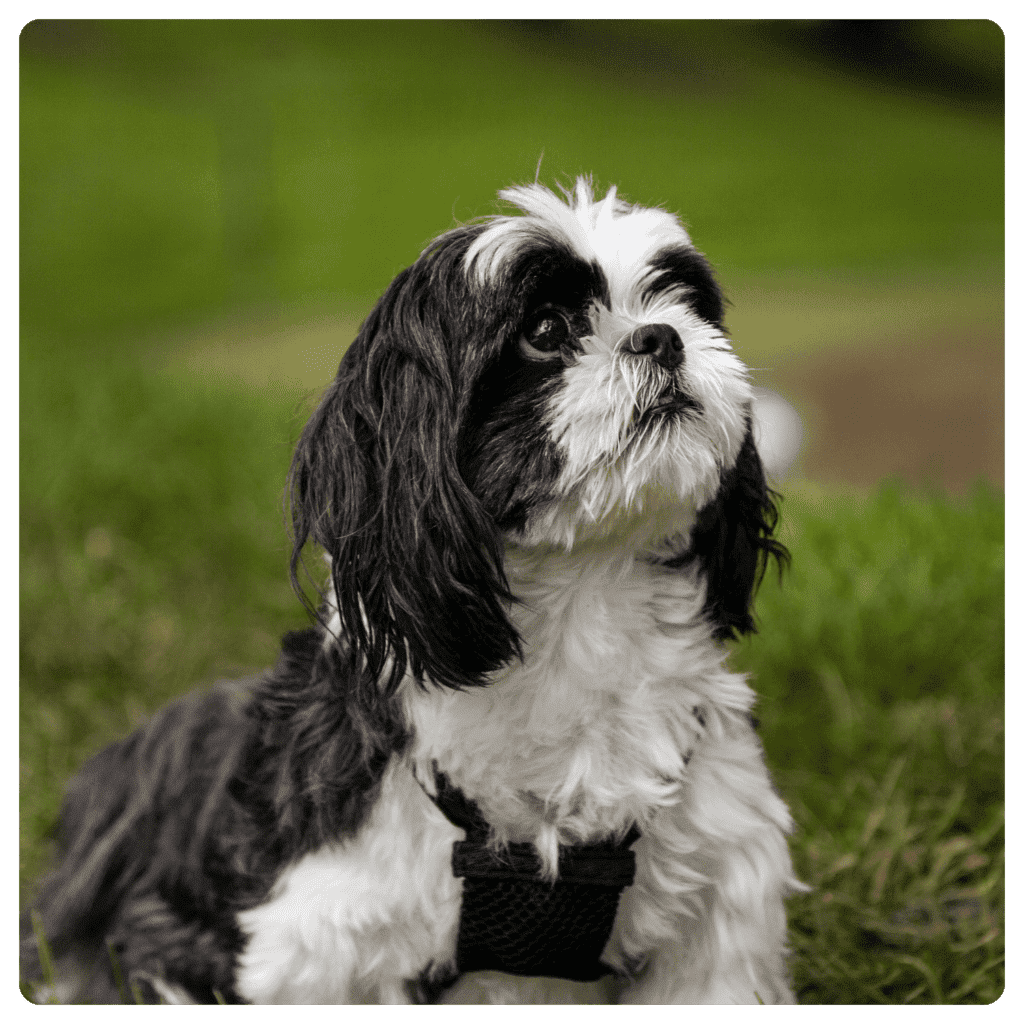
- Characteristics: Shih Tzus are small-sized dogs with a distinctively noble appearance. They have a long, flowing coat that requires regular grooming and comes in various colors, including gold, black, white, and brindle. Shih Tzus has a compact build with a broad, round head and dark, expressive eyes.
- Temperament: Shih Tzus are outgoing, affectionate, and playful dogs with a charming personality. They enjoy being pampered and often display a regal demeanor that belies their small size; breeds like the Shih Tzu make excellent family pets. Shih Tzus are known for their loyalty to their families and make wonderful companions for households of all sizes.
- Lifespan: Typically 10-16 years.
- Diet and Nutrition: Shih Tzus require a balanced diet that provides essential nutrients for their small size and energy levels. High-quality commercial dog food or a vet-approved homemade diet is recommended. Portion control is important to prevent obesity, which can lead to health issues.
- Exercise Requirements: Shih Tzus are relatively low-energy dogs that require moderate exercise to stay healthy and prevent obesity, making them an ideal pet for apartment living. Daily walks, play sessions, and indoor activities are ideal to keep them mentally and physically stimulated, especially for active dog breeds in India.
- Grooming Needs: Shih Tzus has a long, flowing coat that requires daily brushing to prevent mats and tangles. Regular baths, nail trimming, ear cleaning, and dental care are also important for their overall health and hygiene.
- Health Considerations: Shih Tzus are generally healthy dogs, but they may be prone to certain health issues such as dental problems, eye conditions, respiratory issues, and obesity; breeds are known for their unique health considerations. Regular veterinary check-ups and preventive care can help detect and manage these conditions early.
- Ideal Living Conditions: Shih Tzus are well-suited to homes with individuals or families who can provide them with love, attention, and regular grooming. They are indoor dogs that enjoy spending time with their human companions and may not do well if left alone for long periods.
8) Boxer Dog
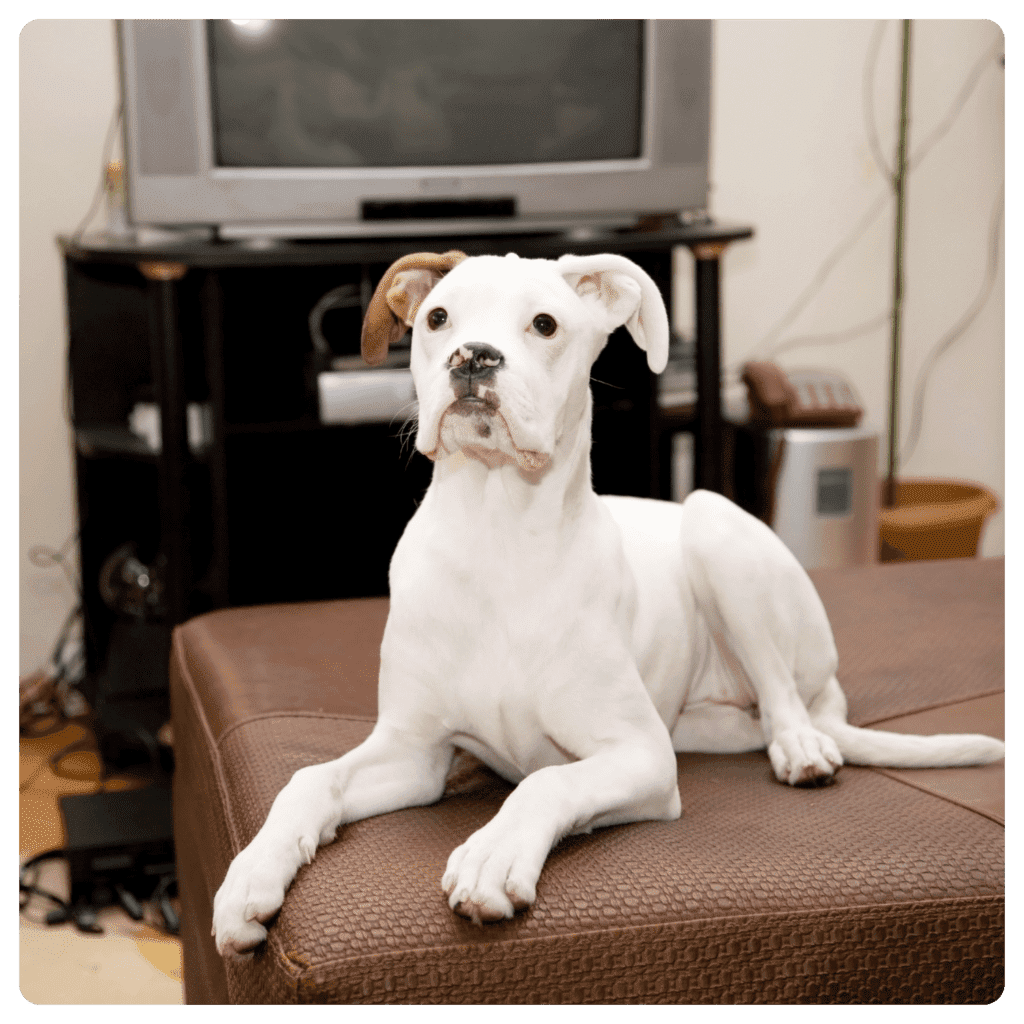
- Characteristics: Boxers are medium to large-sized dogs with a muscular, athletic build. They have a short, smooth coat that comes in fawn or brindle colors, often with white markings on the chest and face. Boxers are known for their distinctive underbite and expressive faces.
- Temperament: Boxers are playful, loyal, and protective dogs with boundless energy and enthusiasm for life, making them one of the most popular dog breeds. They are known for their clownish antics and love to make their families laugh. Boxers are also fiercely loyal to their owners and make excellent watchdogs, always ready to protect their loved ones if the need arises.
- Lifespan: Typically 10-12 years.
- Diet and Nutrition: Boxers require a balanced diet that provides essential nutrients for their muscular build and energy levels. High-quality commercial dog food or a vet-approved homemade diet is recommended. Portion control is important to prevent obesity in dogs, which can strain their joints and lead to health issues, especially in beloved pet breeds in India.
- Exercise Requirements: Boxers are active and energetic dogs that require regular exercise to stay healthy and prevent boredom. Daily walks, play sessions, and opportunities for off-leash running are ideal to keep them mentally and physically stimulated.
- Grooming Needs: Boxers have a short, smooth coat that requires minimal grooming, making them a low maintenance option for busy owners. Weekly brushing to remove loose hair and occasional baths are usually sufficient to maintain the coat of various dog breeds, including those among the top 20 for family pets. Regular nail trimming, ear cleaning, and dental care are also important for their overall health and hygiene.
- Health Considerations: Boxers are prone to certain health issues such as hip dysplasia, heart conditions, cancer, and gastrointestinal problems, which potential owners should consider when choosing the right dog. Regular veterinary check-ups and preventive care can help detect and manage these conditions early.
- Ideal Living Conditions: Boxers are well-suited to homes with individuals or families who can provide them with love, attention, and regular exercise. They are indoor dogs that enjoy spending time with their human companions and may not do well if left alone for long periods.
9) Pug

- Characteristics: Pugs are small-sized dogs with a distinctive wrinkled face and curled tails. They have a compact, muscular build and a smooth, glossy coat that comes in fawn or black colors, typical of many popular dog breeds in India. Pugs are known for their charming and comical appearance.
- Temperament: Pugs are affectionate, charming, and sociable dogs with a playful personality that endears them to everyone they meet. They thrive on human companionship and enjoy being the center of attention, often displaying a sense of humor that keeps their families entertained. Pugs are known for their gentle and loving nature, making them excellent companions for families of all ages.
- Lifespan: Typically 12-15 years or more.
- Diet and Nutrition: Pugs require a balanced diet that provides essential nutrients for their small size and energy levels. High-quality commercial dog food or a vet-approved homemade diet is recommended. Portion control is important to prevent obesity, which is common in this breed.
- Exercise Requirements: Pugs are relatively low-energy dogs that require moderate exercise to stay healthy and prevent obesity. Daily walks, play sessions, and indoor activities are ideal to keep them mentally and physically stimulated.
- Grooming Needs: Pugs have a short, smooth coat that requires minimal grooming. Weekly brushing to remove loose hair and occasional baths are usually sufficient. Regular nail trimming, ear cleaning, and dental care are also important for their overall health and hygiene.
- Health Considerations: Pugs are prone to certain health issues such as obesity, brachycephalic syndrome, respiratory problems, and eye conditions. Regular veterinary check-ups and preventive care can help detect and manage these conditions early.
- Ideal Living Conditions: Pugs are well-suited to homes with individuals or families who can provide them with love, attention, and regular grooming, making them a popular dog breed in India. They are indoor dogs that enjoy spending time with their human companions and may not do well if left alone for long periods.
10) German Shepherd

- Characteristics: German Shepherds are large-sized dogs with a strong, muscular build and a distinctive black and tan coat. They have a noble and dignified appearance, with erect ears and a bushy tail that adds to their regal demeanor.
- Temperament: German Shepherds are intelligent, versatile, and loyal dogs with a strong work ethic and an instinct to protect. They are known for their courage and confidence, making them excellent guardians and working dogs in various fields such as police work, search and rescue, and therapy work. German Shepherds are also loyal and affectionate towards their families, forming strong bonds with their owners and often displaying a gentle and loving nature with children and other pets.
- Lifespan: Typically 9-13 years.
- Diet and Nutrition: German Shepherds require a balanced diet that provides essential nutrients for their muscular build and energy levels. High-quality commercial dog food or a vet-approved homemade diet is recommended. Portion control is important to prevent obesity, which can strain their joints and lead to health issues.
- Exercise Requirements: German Shepherds are active and energetic dogs that require regular exercise to stay healthy and prevent boredom. Daily walks, play sessions, and opportunities for mental stimulation are ideal to keep them mentally and physically engaged.
- Grooming Needs: German Shepherds have a double coat that requires regular grooming to remove loose hair and prevent mats and tangles. Weekly brushing, occasional baths, and regular nail trimming, ear cleaning, and dental care are important for their overall health and hygiene.
- Health Considerations: German Shepherds are prone to certain health issues such as hip dysplasia, elbow dysplasia, degenerative myelopathy, and bloat. Regular veterinary check-ups and preventive care can help detect and manage these conditions early.
- Ideal Living Conditions: German Shepherds are well-suited to homes with individuals or families who can provide them with love, attention, and regular exercise. They are intelligent and loyal companions who thrive on human companionship and may not do well if left alone for long periods, particularly the boxer dog breed.
Tips for Responsible Dog Ownership

Responsible dog ownership is essential for the well-being of your furry friend and the community. Here are some important tips to consider: Research which dog breed is best for your living situation and family dynamics.
Commitment and Dedication:
- Owning a dog is a long-term commitment. Make sure you are ready to provide care, attention, and love for the entire lifespan of the dog, which can be 10 years or more.
Research and Choose Wisely:
- Before getting a dog, research different breeds to find one that matches your lifestyle, energy level, and living situation. Consider factors such as size, exercise needs, grooming requirements, and temperament.
Adopt Don’t Shop:
- Consider adopting from shelters or rescue organizations rather than buying from breeders or pet stores. Many dogs in shelters are in need of loving homes and make wonderful companions.
Selecting a Reputable Breeder:
- If you choose to buy from a breeder, ensure they are reputable and prioritize the health and welfare of their dogs. Avoid puppy mills and backyard breeders who prioritize profit over the well-being of the animals, as this can negatively impact the friendly nature of the pet dog you bring home.
Training and Socialization:
- Start training and socialization early, ideally when the dog is a puppy, as this helps them develop a friendly disposition. Positive reinforcement methods, such as treats and praise, are effective in teaching obedience and good behavior.
- Socialize your dog with various people, animals, and environments to help them become well-adjusted and confident.
Provide Proper Care:
- Ensure your dog receives regular veterinary check-ups for vaccinations, preventive care, and health screenings. Stay up-to-date on vaccinations, flea and tick prevention, and heartworm prevention.
- Feed your dog a balanced diet appropriate for their age, size, and activity level, particularly for breeds like the Cocker Spaniel that may have specific nutritional requirements, ensuring they remain among the best companions. Provide fresh water, shelter, and a comfortable sleeping area.
Exercise and Mental Stimulation:
- Dogs need regular exercise to stay healthy and mentally stimulated. Provide daily walks, play sessions, and opportunities for physical activity.
- Engage your dog’s mind with interactive toys, puzzle feeders, and training sessions to prevent boredom and behavioral issues.
Create a Safe Environment for your pet, particularly if you have a small dog breed that might be more vulnerable in a busy household.
- Puppy-proof your home by removing hazards such as toxic plants, small objects, and electrical cords. Provide a safe and secure outdoor area for your dog to play.
- Provide mental stimulation through enrichment activities and toys to keep your dog entertained and prevent destructive behavior.
Love and Attention:
- Dogs thrive on love, attention, and companionship. Spend quality time with your dog, provide affection, and build a strong bond based on trust and mutual respect.
Be a Responsible Citizen:
- Clean up after your dog when out for walks and ensure they are well-behaved in public spaces, especially in urban settings suited for Indian families. Respect leash laws and be considerate of others in the community.
Importance of Responsible Pet Ownership.
Responsible pet ownership is vital for the well-being of both the pet and the community. Here are several reasons why responsible pet ownership is important: It ensures that your beloved pet receives the care and attention they deserve.
- Animal Welfare: Responsible pet ownership ensures the physical and emotional well-being of the animal. It involves providing proper nutrition, veterinary care, exercise, socialization, and a safe environment. Pets rely on their owners for all their needs, and responsible ownership ensures they live happy, healthy lives.
- Prevention of Animal Overpopulation: Irresponsible pet ownership, such as failure to spay or neuter pets, can contribute to pet overpopulation. This leads to overcrowded shelters, euthanasia of healthy animals, and stray animals roaming the streets, a situation that is particularly concerning for small breeds. Responsible pet ownership includes spaying or neutering pets to help control the population and prevent unwanted litters, particularly among international breeds.
- Public Health and Safety: Properly cared-for pets are less likely to pose health risks to their owners and the public. Vaccinations, regular veterinary check-ups, and preventive care help prevent the spread of diseases and parasites that can affect both animals and humans. Responsible ownership also includes training and socialization to ensure pets are well-behaved and do not pose a danger to others.
- Environmental Impact: Irresponsible pet ownership can have negative environmental consequences. For example, allowing pets to roam freely can disrupt ecosystems and endanger wildlife. Responsible ownership involves keeping pets contained and preventing them from causing harm to the environment.
- Community Well-being: Responsible pet ownership fosters a sense of community well-being. Well-cared-for pets contribute positively to their communities by providing companionship, therapy, and assistance to their owners. Responsible owners also ensure their pets are properly trained and do not disturb neighbors or public spaces.
- Legal and Financial Responsibility: Responsible pet ownership includes complying with local laws and regulations regarding pet ownership, such as licensing and leash laws. Owners are also financially responsible for their pets’ needs, including food, veterinary care, and any damages or injuries caused by their pets.
Tips For Selecting a Reputable Breeder or Adopting From Shelters.
When selecting a reputable breeder or adopting from shelters, it’s essential to consider several factors to ensure you find the right fit for you and your future pet. Here are some tips for caring for friendly dog breeds and ensuring they thrive in your home environment.
Selecting a Reputable Breeder:
- Research Thoroughly: Take your time to research different breeders extensively. Look for breeders who have a good reputation and are known for prioritizing the health and well-being of their dogs.
- Visit the Breeder: Arrange to visit the breeder’s facility in person. This allows you to see firsthand how the dogs are kept and cared for. Pay attention to cleanliness, living conditions, and the overall health and temperament of the dogs.
- Ask Questions: It’s important to ask about the specific needs of different breeds, especially low shedding options. Don’t hesitate to ask the breeder plenty of questions about their breeding practices, health testing procedures, and the lineage of the dogs. A responsible breeder will be transparent and willing to provide information about their breeding program.
- Health Testing: Inquire about health testing for genetic disorders common to the breed, particularly in popular breeds that may have inherited health issues. Responsible breeders conduct thorough health screenings on their breeding dogs to ensure they are free from hereditary health issues that could be passed on to their puppies.
- Contracts and Guarantees: Reputable breeders often provide written contracts outlining the terms of sale, health guarantees, and return policies. Make sure you understand all the terms before committing to a purchase.
- References: Ask the breeder for references from previous puppy buyers or other reputable breeders. Positive testimonials and referrals from satisfied customers are a good indicator of a reputable breeder.
Adopting from Shelters:
- Visit Local Shelters: Visit shelters or rescue organizations in your area to see the dogs available for adoption. Many shelters have websites where you can view profiles and photos of available dogs.
- Ask Questions: Talk to shelter staff or volunteers to learn more about the dogs’ backgrounds, temperaments, and any special needs they may have. They can help match you with a dog that suits your lifestyle and preferences.
- Consider Adult Dogs: While puppies are often in high demand, consider adopting an adult dog. Adult dogs may already be housetrained and have established personalities, making them a great choice for first-time dog owners who want friendly nature companions.
- Be Patient: Finding the right dog may take time, so be patient and keep visiting shelters until you find the perfect match, as many rescue dogs are waiting for a loving home. Don’t rush into a decision; it’s essential to choose an ideal pet that fits your lifestyle and personality.
- Prepare for the Adoption Process: Be prepared to fill out an adoption application, undergo an interview, and pay an adoption fee, especially when considering adopting rescue dogs. Shelters may also require a home visit to ensure you can provide a safe and suitable environment for the dog, particularly if you are considering adopting a large breed.
- Follow-Up Support: Many shelters offer post-adoption support and resources to help new pet owners adjust to life with their adopted dog. Take advantage of these resources to ensure a smooth transition for both you and your new furry friend.
Creating a Safe And Comfortable Environment For The Dog At Home.
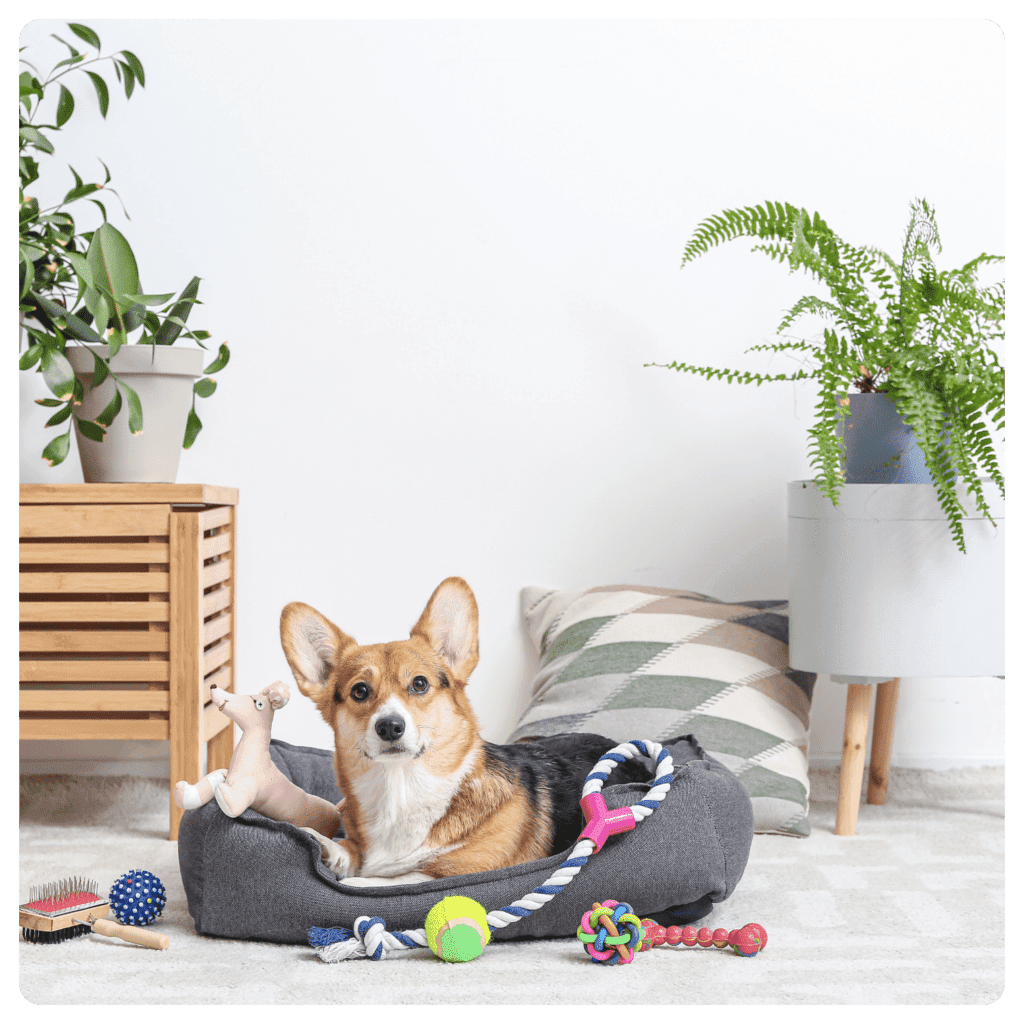
Creating a safe and comfortable environment for your dog at home is essential for their well-being and happiness. Here are some tips to help you achieve this:
- Designated Living Space: Allocate a specific area in your home where your dog can rest and feel secure, which is important for all companion dogs in India. This could be a cozy corner with a comfortable bed or a crate if your dog enjoys having their own den-like space.
- Pet-proofing: Conduct a thorough pet-proofing of your home to remove any hazards that could pose a danger to your dog. This includes securing electrical cords, removing toxic plants, and keeping household chemicals and medications out of reach.
- Comfortable Bedding is essential for breeds like the Rottweiler, which require a supportive sleeping surface for their size. Provide your pet dog with a comfortable bed or blanket where they can rest undisturbed. Choose bedding that is appropriate for your dog’s size and sleeping preferences, whether they prefer a soft cushion, a raised bed, or a cozy cave-like bed, especially if you have a low shedding breed.
- Temperature Control: Ensure your home is kept at a comfortable temperature for your dog, especially during extreme weather conditions. Provide access to shade and fresh water during hot weather, and consider using heating pads or blankets to keep your dog warm during cold weather.
- Safe Containment: If your dog spends time outdoors, make sure your yard is securely fenced to prevent them from wandering off and getting lost. Check for any gaps or potential escape routes in the fence and address them promptly.
- Toys and Enrichment: Keep your dog mentally stimulated and entertained by providing a variety of toys and enrichment activities. Rotate toys regularly to prevent boredom, and consider interactive toys that dispense treats or challenge your dog’s problem-solving skills.
- Regular Exercise: Ensure your dog receives regular exercise to keep them healthy and prevent behavioral issues. Daily walks, playtime in the yard, and interactive games like fetch or tug-of-war are great ways to keep your dog active and engaged.
- Regular Grooming: Maintain your dog’s grooming needs to keep them clean, healthy, and comfortable. This includes regular brushing to remove loose hair and prevent mats, bathing as needed, trimming nails, and cleaning ears and teeth.
- Identification: Make sure your dog wears a collar with an ID tag containing your contact information at all times, even when indoors. Microchipping is also recommended as a permanent form of identification in case your dog gets lost.
- Supervision: Always supervise your dog, especially when they are exploring new areas of your home or yard. This helps prevent accidents and allows you to intervene if necessary.
Conclusion
In conclusion, choosing the best dog breed for your home in India requires careful consideration of several factors to ensure a harmonious and fulfilling relationship between you and your canine companion. Throughout this blog, we’ve explored various aspects of responsible dog ownership, from selecting the right breed like the Great Dane to creating a safe and comfortable environment at home. Here’s a recap of the key points discussed:
- Choosing the Right Breed: Consider factors such as size, temperament, energy level, grooming needs, and suitability for Indian climate and living conditions when selecting a dog breed.
- Responsibility and Commitment: Being a responsible pet owner means understanding the needs of your ideal pet. Responsible pet ownership involves providing proper care, attention, and love to meet the physical and emotional needs of your dog throughout their life.
- Selecting a Reputable Breeder or Adopting from Shelters: Research thoroughly, ask questions and visit breeders or shelters to ensure you find a healthy and well-adjusted dog from a reputable source.
- Creating a Safe and Comfortable Environment: Pet-proof your home, provide comfortable bedding, maintain a suitable temperature, and ensure your dog has access to toys, enrichment activities, and regular exercise.
- Healthcare and Nutrition: Schedule regular veterinary check-ups, feed a balanced diet, and provide preventive care to keep your dog healthy and happy.
- Training and Socialization: Start training and socialization early to ensure your dog becomes a well-behaved and well-adjusted member of the family.
- Joy and Companionship: Emphasize the joy, companionship, and unconditional love that dogs bring to our lives. Dogs have a unique ability to brighten our days, reduce stress, and provide loyal companionship through all of life’s ups and downs.
Ultimately, the decision to bring a dog into your life should be based on careful consideration of your lifestyle, preferences, and ability to provide the love and care that a dog like the Indian Pariah Dog deserves. Whether you choose a playful Labrador Retriever, a loyal Indian Pariah Dog, or any other breed that captures your heart, the bond you form with your furry friend will undoubtedly enrich your life in countless ways.
So, I encourage you, dear reader, to take the time to make an informed decision, considering all the factors discussed in this blog. Whether you’re a first-time dog owner or an experienced pet parent, the journey of dog ownership is one filled with love, joy, and unforgettable memories, especially when considering which dog breed is best for your lifestyle. So, here’s to finding the perfect canine companion who will bring endless happiness and companionship into your life!
Frequently Asked Questions
1) What factors should I consider when choosing a dog breed for my home in India?
When selecting a dog breed for your home in India, consider factors such as size, temperament, energy level, grooming needs, suitability for the Indian climate, and compatibility with your lifestyle and living conditions.
2) Is it better to adopt a dog from a shelter or buy from a breeder?
Both options have their advantages. Adopting from a shelter gives a homeless dog a second chance at life and helps reduce pet overpopulation. Buying from a reputable breeder ensures you know the dog’s background and lineage, but it’s essential to research thoroughly to avoid supporting puppy mills or unethical breeding practices.
3) How do I know if a breeder is reputable?
Look for breeders who prioritize the health and well-being of their dogs, conduct health screenings on breeding stock, provide proper care and socialization for puppies, and offer written contracts and health guarantees. Visiting the breeder’s facility in person and asking for references can also help assess their reputation, particularly for international breeds.
4) What are some common health issues in dogs, and how can I prevent them?
Common health issues in dogs include obesity, dental problems, skin issues, joint problems, and genetic disorders. Preventive measures include feeding a balanced diet, providing regular exercise, maintaining proper grooming and dental care, and scheduling regular veterinary check-ups.
5) How can I ensure my dog is happy and well-adjusted at home?
Create a safe and comfortable environment, provide mental and physical stimulation through toys and activities, establish a routine for feeding and exercise, offer plenty of love and attention, and invest time in training and socialization.
6) What should I do if my dog shows signs of behavioral problems?
Address behavioral problems promptly by identifying the underlying cause, seeking guidance from a professional dog trainer or behaviorist, and implementing positive reinforcement training techniques. Consistency, patience, and understanding are key to addressing behavioral issues effectively.
7) How can I introduce a new dog to my existing pets or family members?
Introduce new dogs to existing pets or family members gradually and in a controlled manner. Supervise interactions, provide plenty of positive reinforcement, and allow each pet to adjust to the new dynamic at their own pace. Patience and consistency are essential during the transition period.











































